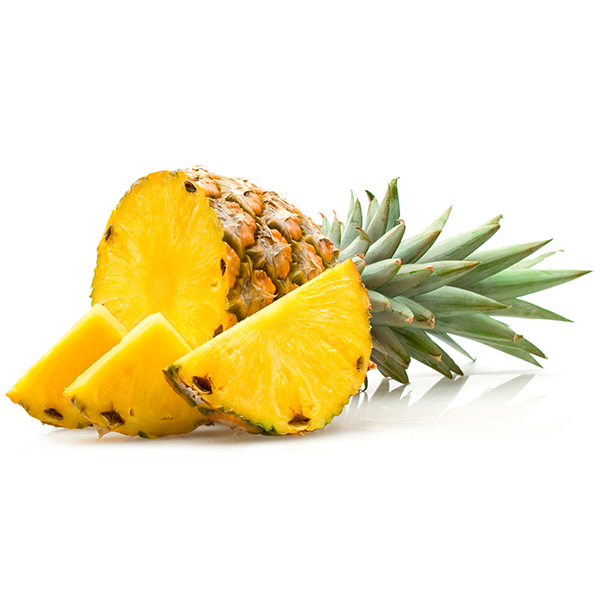
Organic pineapple makes up a small percentage of produce sales and less than 1% of the category, but it is essential to a fully stocked organic tropicals section. Market your organic tropicals section as a whole, giving plenty of attention to more familiar items like organic pineapple.
Promote organic pineapple as a great pairing with organic ham, especially around both the winter and spring holidays. It is also a great addition to stir-fries, so market it with other organic stir-fry vegetables and sauces. The sweet tang of organic pineapple can liven up a green salad. Cross-merchandise it with organic bagged salads.
Promote organic pineapple to environmentally conscious parents by playing up the reduced use of pesticides. Promote organic pineapple’s sweet taste as a tasty snack or lunch box treat.
Organic pineapple is a great choice to add to an organic gift box or basket around the winter holidays.
Encourage consumers to create organic fruit skewers for grilling during the summer. Create promotions that include organic fruits that grill well and organic meat.
Display organic pineapple with other organic tropicals. Create a large, eye-catching tropicals display by placing conventional fruit at one end and organic fruit at the other, with the appropriate barriers in between.
Organic pineapple can bruise easily so avoid dumping it on the display or stacking it. Keep an eye on your display and remove product with dried out, shriveled leaves.
Fresh-cut pineapple is a popular choice with consumers, but it must be cut in an organically certified processing facility to be sold as organic.
Shipping
Organic pineapple is available in a variety of pack sizes, including those similar to conventional product.
Grades
United States U.S. fancy
U.S. No. 1
U.S. No. 2
Hawaii
Hawaii fancy
Hawaii No. 1
Hawaii cocktail
Handling
Temperature: mature green, 50 to 55 F (10 to 12.8 C); ripe, 45 F (7.2 C), 32 to 35 F (0 to 1.7 C)
Relative humidity: 85-90%
Mist: no
Typical shelf life: 14 to 36 days
Odor-sensitive (Do not store or transport odor-sensitive items with commodities that produce odors. Pineapples will absorb odors produced by avocados and green peppers.)
Susceptible to chilling injury (Damage sometimes is not apparent until produce is returned to a higher temperature.)
Fruit with a deep yellow shell color has higher sugar content because it is picked later in the growing process.